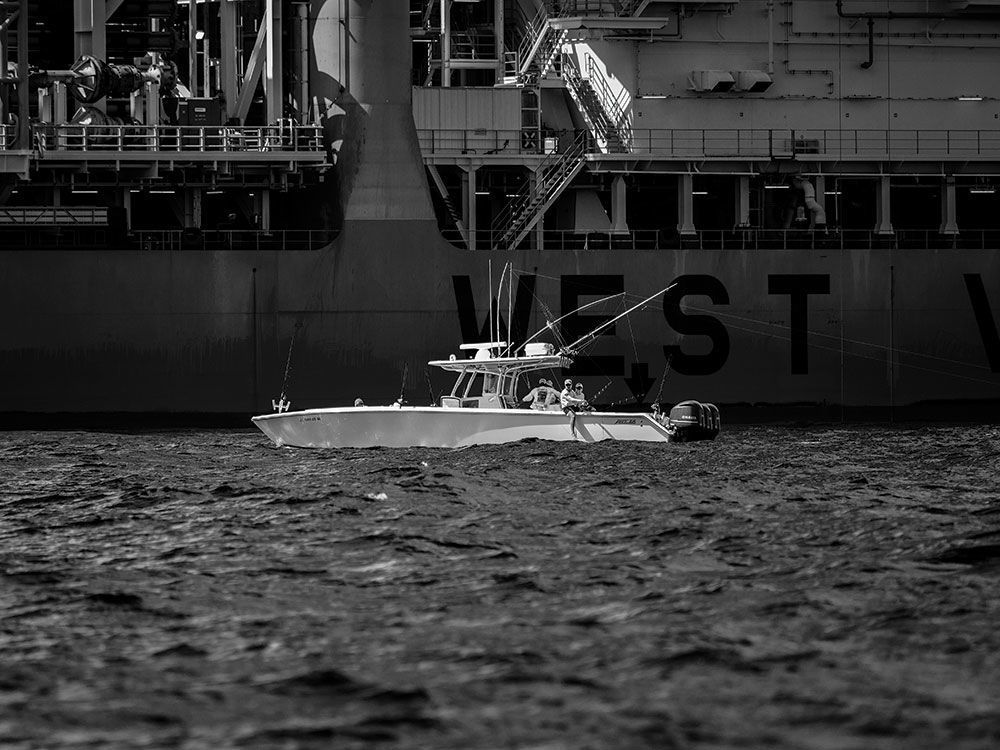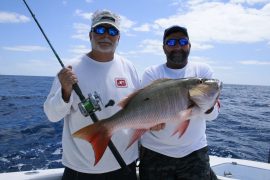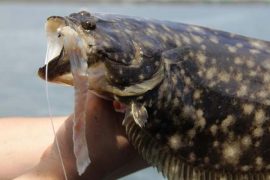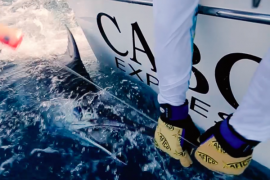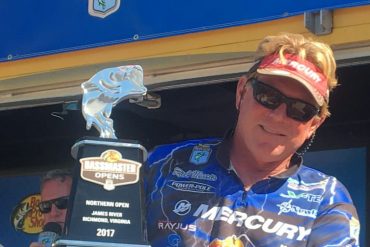
Mention a center console among the sport-fishing teams in the Gulf of Mexico, and I guarantee the words “monkey boat” won’t be too far behind. But the monkey boats of old — once considered large at 28 feet — are no longer just for the weekend warrior; many of the teams fishing aboard them are downright competitive on the billfish tournament circuits. The advances in engineering — both in boats and outboards — have evolved this segment of offshore machines to points once thought inconceivable. Add improvements in tackle and electronics, and you can bet center consoles will keep showing up in the winner’s circle.
Center consoles have long dominated the edge off South Florida with kites a-blazing when the sails push through, but don’t overlook their benefits when on the troll for billfish.

Thanks to some new equipment, crews fishing on smaller boats can now adopt those tactics used by large battlewagons, and there are several benefits of a center console that even outweigh those of a larger sport-fisher. That’s as long as you’re OK without the creature comforts of an air-conditioned salon, a full galley and plush accommodations. But hey, it’s all about the fishing, right?
On the Troll
I’ve spent countless days targeting a mixed bag of game fish aboard a center console, yet I’ve always wanted to be on board when a billfish bite really turns on to see if they can hold their own compared with their larger counterparts. My friend Capt. David Salazar, down at Casa Vieja Lodge in Guatemala, added a pair of 35-foot Contenders to its stable of classic game boats, so with an almost-guaranteed shot at great billfish action, it was a perfect opportunity to put the popular design to the test.
The question in my mind before heading to Casa Vieja — as with almost every person I talked to about teaser fishing from a center console — was whether the outboards would raise as many fish as the larger boats. The harmonics, whitewash and spread all have an impact on the number of fish raised, so I was eager to compare the number of sails we would see on a center console.

It didn’t take long for the first sailfish to appear on the right teaser; I grabbed the rod, popped the line out of the flat-line clip, and fed the fish — just like on a big boat, despite some extra hardware hanging on the transom. No big deal, I thought to myself.
But the true advantage of a center console — aside from added speed — is the ability of an angler to fight and release a fish from the bow. This allows the crew to keep the baits and teasers in the water as the captain makes the initial turn toward the fish to increase the chances of hooking a second or third sail — an important factor if you want to ring up numbers in a tournament.
Capt. Franz Hoffman lifted the squid chain to clear my line as I walked to the bow before redeploying it back into the spread. Suddenly Hoffman screamed, “There’s another fish on the right-long bait!” and just like that, we were hooked into a double.

The second fish headed in the same direction as my fleeing sail, so the mate joined me on the bow as the boat made a final turn to see if a third fish would appear. The releases were easy: a quick grab of the leader from the bow as the boat continued its forward motion with the teasers still deployed. And just as Salazar had said before my trip, we raised as many sails aboard our boat as the other big boats fishing around us that day.
The Dredge Race
While we didn’t pull dredges in Guatemala, it’s no secret that they are the ticket when chasing billfish. But fishing aboard a center console doesn’t mean you can’t keep up in this arms race of dredge-fishing. There are several lighter and more-compact dredge options on the market today geared directly toward center consoles, but don’t be afraid to whip out the natural and large artificial dredges either — as long as you have the hardware to support it. Companies know anglers want to fish large dredges, so there are plenty of options for center consoles to meet preferences and budgets.

